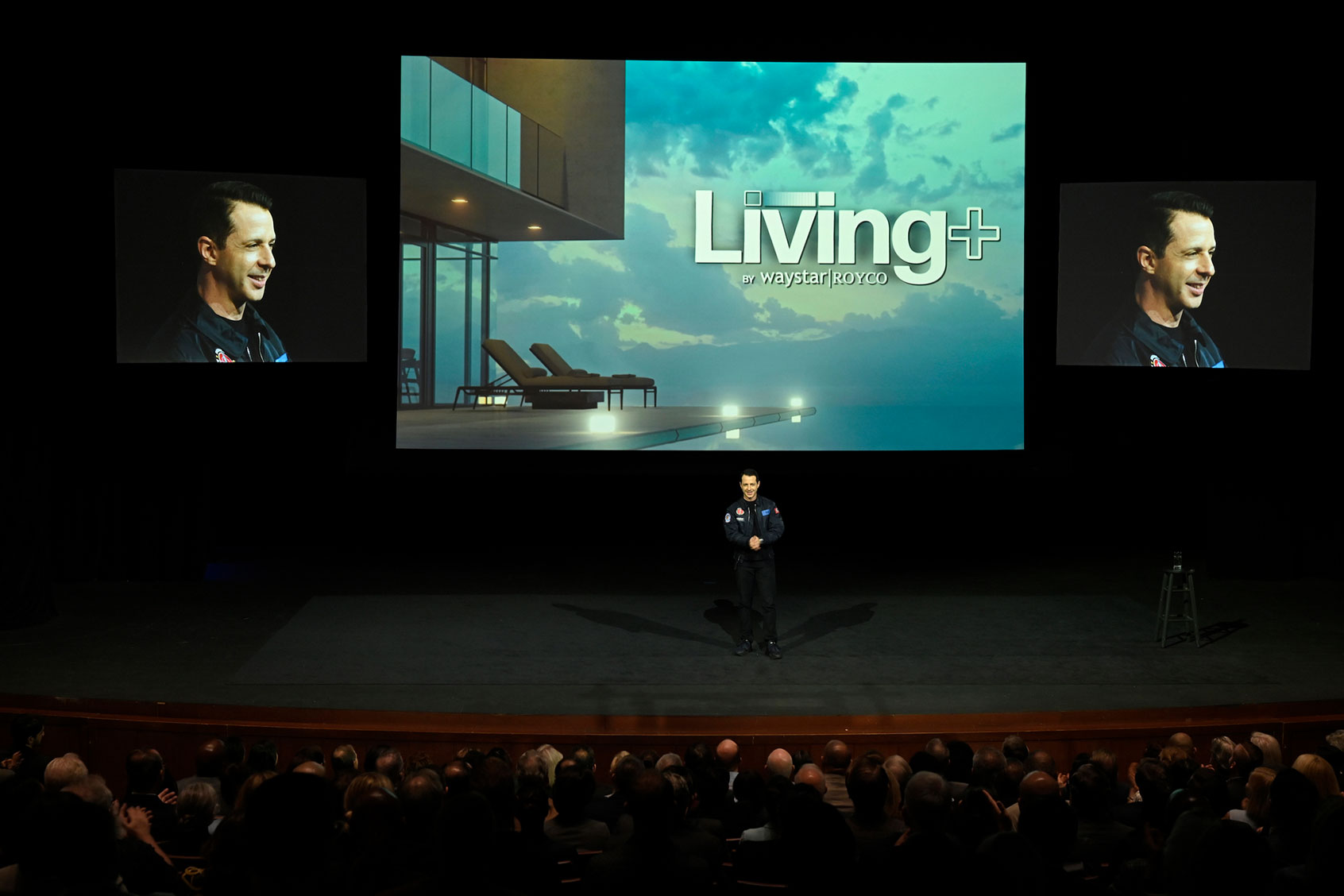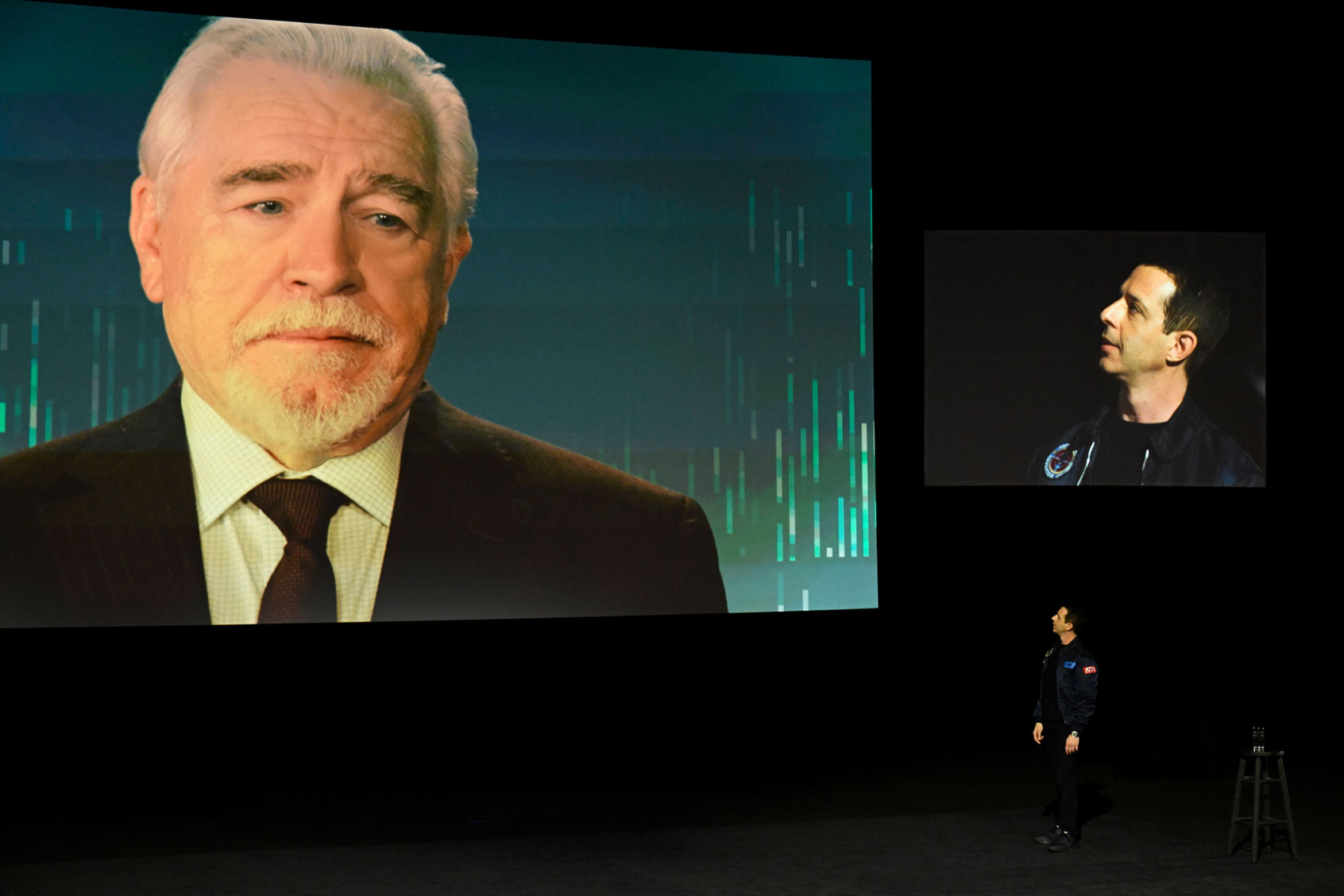Waystar Royco, the powerful media conglomerate of HBO’s “Succession,” led by the late, great Logan Roy, has always resembled Fox News with its conservative corporate leanings and bombastic news channel, ATN, and its behind-the-scenes family dynasty drama. But in the most recent episode, it was all Disney.
In the episode, the sixth one of the final season, titled “Living +,” the surviving Roys launch a product to a meeting of their investors. It’s a “land cruise” experience, a planned community with all the perks, an emphasis on staying young and more than a passing resemblance to Celebration, the Florida master-planned community developed by the Walt Disney Company in the 1990s. A suburb of Orlando, Celebration was meant to be an extension of EPCOT, expanding Walt Disney’s vision of an Experimental Prototype Community of Tomorrow, and giving the people what they wanted: a way to never die.
My family toured Celebration when I was quite young and the developing community itself was new, hawking dreams to vacationers. Mostly I remember the free ice cream Disney employees plied me and my little sister with while salespeople tried to haggle with my parents. But I also remember the freedom. While the grownups talked, my sister and I were alone in the ice cream room, a parlor with red vinyl swivel chairs and a marble counter, which looked so much like the 1975 film “Escape from Witch Mountain,” I wondered when marionettes would start dancing. No one was really watching us. This was a fake town, after all, a collection of fake villages, so how much real trouble could we get into?
The work of living? Other people did it. Celebration was summer all the time.
The sales pitch didn’t work. And for child me, this was a huge disappointment. Goodbye, forever Disney. Goodbye, free ice cream. Goodbye, the idea of riding my bike alone through a town where all the houses looked archaic and the same. For teen me — for any teenager — this kind of faux Norman Rockwell conformity would have been a nightmare. But for adults, it was a chance to stay young forever, to make the magic of the happiest place on earth last, to live there in a constant, manufactured cheerfulness.
Celebration promised a throwback quaintness, the way towns allegedly were. ThoughtCo. describes it as “intended to look and feel like middle America between the Wars. It is the Disney version of ‘Our Town.'” Think Neo-Victorians with gingerbread trim and front porches, cozy cottages and bungalows.
An HOA on performance-enhancing drugs, trash cans would be hidden from view in Celebration. So would cars. We didn’t need to think about those unsightly necessities, certainly didn’t need to see them. The work of living? Other people did it. Celebration was summer all the time with free classes at the town center in gardening, art, cooking. Everything you needed was within walking distance — post office, movie theater, stores, banks, cafés —why ever leave? And why not remember how things used to be, whether or not they were ever actually that way?
If Disney made adults feel like kids again, maybe Disney Town could recapture that feeling of safety, of other people looking out for you — no danger allowed.
One method to staying forever young, or telling yourself you are? To remain stagnant, rooted in the past. Or the fake past Celebration promised. If Disney made adults feel like kids again, maybe Disney Town could recapture that feeling of safety, of other people looking out for you — no danger allowed behind these picket fences. More than implied in this 1950s-esque idealization of Americana is the segregation and bigotry that actually dominated the time. Disney apparently worked to recruit families of color for their planned community, targeting ads in magazines, but in 2000, the racial makeup of Celebration was 88% white.
 Succession (David M. Russell/HBO)Kendall’s (Jeremy Strong) multimedia presentation of their planned community carefully uses stock footage of multiple family units, including families of color. He describes Waystar’s Living + as “a sanctuary” from the “tough” outside world. “Crime-free, hassle-free and respectful,” he says as an image appears behind him of an elderly white couple smiling as they tap an electronic screen by their door. “Security plus entertainment,” he promises.
Succession (David M. Russell/HBO)Kendall’s (Jeremy Strong) multimedia presentation of their planned community carefully uses stock footage of multiple family units, including families of color. He describes Waystar’s Living + as “a sanctuary” from the “tough” outside world. “Crime-free, hassle-free and respectful,” he says as an image appears behind him of an elderly white couple smiling as they tap an electronic screen by their door. “Security plus entertainment,” he promises.
It’s reminiscent of classic Disney films and TV specials combining live action with animation: Dick Van Dyke winking at cartoon penguins (Logan is the penguin in this scenario).
Also appearing on stage with Kendall? His deceased father. Thanks to some Deepfake-like editing, Kendall interacts with footage of Logan (Brian Cox), the late Waystar patriarch. It’s creepy. It’s also reminiscent of classic Disney films and TV specials combining live action with animation: Dick Van Dyke winking at cartoon penguins (Logan is the penguin in this scenario). But eternal life is a key selling point in Waystar’s condos. “How about I told you it was all going to last forever?” Kendall teases. Is he selling timeshares to the moon ? To cryogenic chambers?
The party never ends at Living +, in part because you’re constantly bombarded with distracting media (early film releases! Directors sharing their rough cuts! Character breakfasts!), in part because you can relive your pretend childhood and in part because Kendall promises excellent, life-preserving healthcare, the kind only rich people get. Cutting-edge technology has always been central to Disney too, not simply in EPCOT; as of 2021, Celebration has plans to put in a medical school.
Want a daily wrap-up of all the news and commentary Salon has to offer? Subscribe to our morning newsletter, Crash Course.
It’s fitting that Kendall describes the planned community as a land cruise. Because I can’t think of anything more terrible: trapped with the same drunk people, forced fun and not even an ocean view. But cruises – also a mainstay of Disney, furthering the connection — are another way to escape real life. You sail away from it, leaving other people high and dry on land.
Maybe the “plus” of Living + is another nod to Disney and its streaming service, Disney +. Maybe it’s a way for those wealthy enough to afford a Waystar community to distance themselves from ordinary humans, those non-plus-ers just “surviving” as Kendall scoffs, like Dr. Suess’ Sneetches. But one thing is certain. For most people: whether it’s a dream or nightmare, Living + would be unreachable. As Shiv says, “Now we’re leaving planet Earth.”

